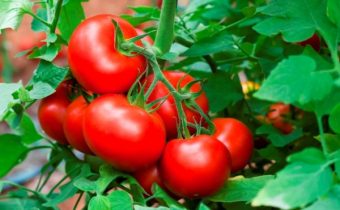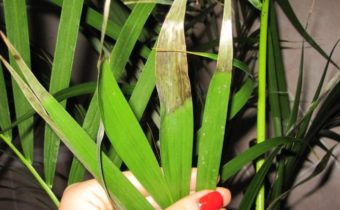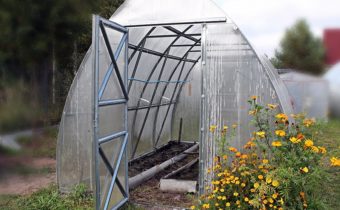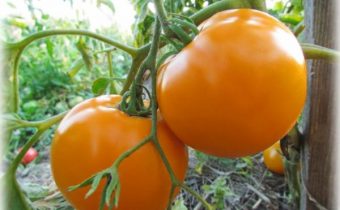Characteristics and description of the hybrid Dobry F1 tomato
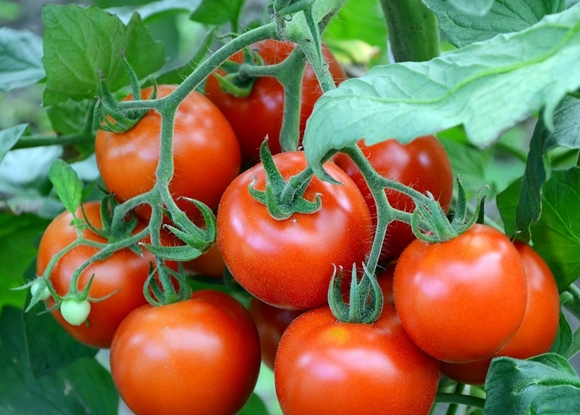
How to stretch the period of fruiting tomatoes, use fresh vegetables, not only in summer but also in autumn? To solve this problem, breeders offer hybrids of a later maturity, resistant to many diseases, intended for cultivation in greenhouses. This group includes the Dobry f1 tomato, which, according to reviews, also tastes great. Get acquainted with the characteristics and descriptions of this variety.
The main thing about tomato
Tomato "Good f1" medium maturity - the fruits appear four months after germination, intended for cultivation in greenhouses. The plant is indeterminate, powerful, up to 180 cm high. The leaves are large, dark green in color. Yield: up to 13 kg of tomato is removed from 1 sq. M.
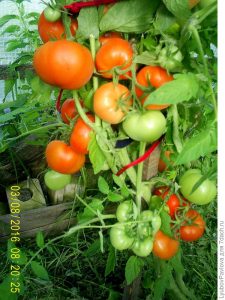
Fruit Description
- Fruit weight 140 - 170 g.
- The flesh is sweet, meaty, pleasant taste.
- Fruits leveled, have a flat-rounded shape.
- The surface is smooth.
- The color of the ripe fruit is red.
- Used mainly for the preparation of salads and other dishes, fresh, for canning.
- Tomatoes are well preserved.
Diseases and pests
Being a hybrid, the Dobry f1 tomato has a high resistance to many diseases - fusarium, tobacco mosaic virus. However, like all tomatoes, prone to other diseases, including late blight. As a prophylactic agent to combat it, use "Fitosporin" or treatment with copper-containing drugs.
To reduce the likelihood of infections in the greenhouse, it is recommended to treat each autumn:
- Clear the greenhouse area from plant residues.
- The walls, the frame of the greenhouse, all the utility inventory to disinfect with a solution of household soap.
- To cultivate the land in the greenhouse with biologics - “Fitosporin”, “Radiance -1” or chemical means - potassium permanganate, Bordeaux mixture.
- Cultivate the soil with lime, dolomite flour.
- Sow herbs - mustard, phacelia.
The implementation of these measures in the fall will reduce the number of harmful bacteria that actively reproduce in favorable conditions. Tillage will also help in controlling the larvae of the pests that inhabit the greenhouse.
Tomatoes are affected by the following pests: slugs, spider mites, Colorado potato beetle. To combat them with their mass appearance, there are many chemicals, but usually gardeners prefer them to folk remedies - infusions of dandelion, garlic, hot pepper.
See also:Tomato "Pervoklashka": universal, with healing properties
Advantages and disadvantages
The tomato of this variety comes into fruiting, usually somewhat later than most of its fellows, but its positive qualities should be noted:
- High yield.
- Stretched fruiting period.
- Disease resistance - Fusarium and tobacco mosaic virus.
- The possibility of long-term storage of fruits.
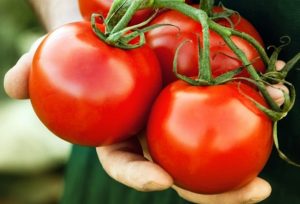 Tomato "Good f1", judging by the reviews and photos of plants that are offered by those who planted it in the greenhouse, can bear fruit for a long time, and the shelf life of ripe fruit reaches 30 days.
Tomato "Good f1", judging by the reviews and photos of plants that are offered by those who planted it in the greenhouse, can bear fruit for a long time, and the shelf life of ripe fruit reaches 30 days.
Unfortunately, late fruiting in the absence of the greenhouse is a disadvantage, since the tomato does not have time to produce a full crop in the open field.
The disadvantages of some gardeners also include the need to spend time on the straw and the formation of plants in the greenhouse.
Features of growing
To get a bountiful harvest of tomatoes "Good f1", seedlings are better to grow yourself, subject to the following rules.
To conduct pre-sowing seed treatment:
- For disinfection use a solution of potassium perfmanganate, the exposure time - 20 minutes, then washed.
- To improve germination, they are soaked in growth stimulants, such as Appin, Zircon for 6 hours.
The soil for seedlings of tomatoes is prepared light and loose, from a mixture of garden soil, compost and ash. In case the soil in the garden is clay and heavy, peat is added. Alternatively, a coconut substrate can be used.
Garden land for seedlings must be pretreated, for disinfection, roasting in the oven or freezing.
See also:Pink unique f1 tomato: unique in all respects
Growing seedlings
Treated seeds are sown at a distance of 2-3 cm into moist soil, sprinkled with earth on top and slightly compacted. The seed container is covered with a newspaper or plastic film (unsealed) and placed in a place with a comfortable (24-25 degrees) temperature.
The emergence of seedlings must be observed - as soon as the first loops begin to appear - they are carried to the most illuminated place.
The next stage of caring for seedlings - within two weeks - is very responsible, since it is necessary to maintain maximum illumination for 11-12 hours per day and temperature conditions: at night - about 14 degrees, day time - about 16 degrees.
After quenching, the temperature is increased by 5-7 degrees. Plants are watered carefully, the ground should be only slightly wet. With the advent of several true leaves, tomatoes swoop down into individual cups or large boxes by volume, keeping a distance of at least 20 cm between them.
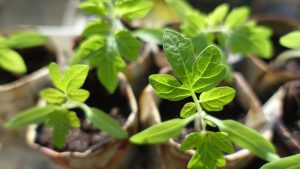 All the remaining time before planting, the seedlings should be well lit, and care consists of moderate watering and feeding (1-2 times for the entire period). Plants are considered ready for planting in the greenhouse in 45-55 days. We can not allow the growth and stretching of seedlings.
All the remaining time before planting, the seedlings should be well lit, and care consists of moderate watering and feeding (1-2 times for the entire period). Plants are considered ready for planting in the greenhouse in 45-55 days. We can not allow the growth and stretching of seedlings.
Planting in a greenhouse is usually started with the onset of persistent heat, when the threat of night frost is over. The distance between plants in a row when forming 1-2 stems, 50 cm is enough.
Under the seedlings prepare the wells, make compost, ash, complex mineral fertilizers, watered. After planting, the plants are watered again, the roots are covered with earth, the supports are set up, as in the future the plant will stretch and it will have to be tied up.
Important!
When planting seedlings can be used only completely rotted compost or manure.
If there is a threat of night frosts, it is desirable to provide additional arcs and covering materials, such as spunbond, in order to preserve the transplanted seedlings.
Caring for plants in the greenhouse
Growing tomatoes in the greenhouse has a number of features. Tomatoes prefer high soil moisture and at the same time low air humidity in the greenhouse. To obtain such an effect in greenhouses, land using grass, sawdust, or other materials, which protect the soil from evaporation and prevent weeds from penetrating, is increasingly being used.
See also:Tomato "Orange Elephant": healthy and tasty
To make the plants in the greenhouse feel comfortable, you need:
- Regular airing of the greenhouse at the expense of window leaves and doors, (without creating at the same time drafts).
- Water the plants once a week. It is allowed to carry out watering only under a root, without moistening leaves, in order to avoid sunburn.
- Regularly carry out weeding, loosening the soil.
- Mulching with mowed grass or weeds.
- Formation of plants in one - two stalks.
- Gathering and pruning of the lower yellowed leaves.This procedure is carried out in the morning so that the wounds can dry out during the daytime.
- Feed tomatoes in the first two to three weeks with green manure - a solution of infusion of mullein and fermented grass (the solution is prepared in a ratio of 1:10).
- After the appearance of the fruit, fertilizing with nitrogen fertilizers is reduced, mineral fertilizers are added.
Important
All types of dressings are carried out only after watering the plants in the greenhouse.
The plants in the greenhouse take much more nutrients out of the soil than in the open field, so you should watch their development very carefully, adding the necessary trace elements if necessary.
And then your favorite plants will thank you for a great harvest.


